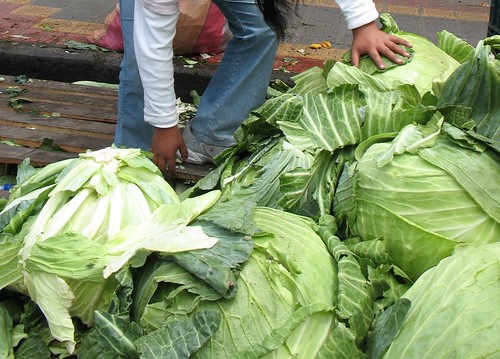 |
| The Brassicas article in Fine Cooking. Photo by BotanicalAccuracy.com. |
"Arugula and turnips bear little resemblance to one another on the plate, so you might be surprised to learn that they both belong to the cabbage family, otherwise known as Brassica."Well, arugula and turnips are both member of the cabbage family, but that family is called Brassicaceae, the mustard or cabbage family. Even if turnips is placed in Brassica, arugula is not, and in fact, the two commonly cultivated species of arugula are in different genera.
The article continues:
"Other members include broccoli, Broccolini, broccoli raab, Brussels sprouts, cauliflower, cabbage, collard greens, mizuna, tatsoi, kale, watercress, radish, and horseradish."Yes, these are all members of the mustard family Brassicaceae, but not all are species of the Brassica genus. Brassica is one of about 375 genera in the mustard family. Some of the species listed are actually cultivars (domesticated varieties) of the same species of Brassica. And what is going on with that capitalization on common names? Lets capitalize every second word that starts with B?
So how does this all work? What is really the same genus and species of these delicious plants? There are many cultivated plants in the Brassicaceae family (the mustard family). Brassica gave its name to the family Brassicaceae, like Rosa (roses) to Rosaceae (rose family), and Poa (bluegrass) to Poaceae (grasses). All plant families have scientific names that end with '-aceae', rather convenient when you try to tell them apart from other group names.
 |
| Giant cabbages (Brassica oleracea) at a market in Uzbekistan. Photo by Lena Struwe (Creative Commons). |
The Brassica genus is a member of the family Brassicaceae. Many other edible mustard plants are placed in other genera of the Brassicaceae.
